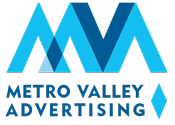People love choices, as do most marketers. But too often, marketers see media planning as a choice between traditional and digital. They pick one and they ignore the other. That thinking leaves money and leads on the table. Advertising shouldn’t be either/or, it should be digital and traditional. As my dad used to say, “A rising tide raises all ships”.
In marketing, we know that people make decisions with both emotion and logic. The heart and the brain work together. That’s true in advertising too. You can’t afford to rely on just one channel or one tactic. Both traditional and digital media have a role. And when they work together, lead generation improves.
The media world requires a “both/and” approach. Consumers move between online and offline media every day. They watch TV while scrolling their phones. They see a billboard and search online later. Integrated media planning meets your customers wherever they are. It also delivers better lead generation and stronger sales outcomes.
How Different Demographics Use Traditional and Digital Media
No one uses just one type of media anymore. Yes, younger audiences spend a lot of time online. But they also listen to the radio, watch connected TV, and see outdoor ads. Meanwhile, older consumers may trust traditional advertising more. Yet they search online to validate a company or scroll social media to keep tabs on friends.
A good media plan recognizes these patterns. It matches media choices to the ways people actually consume content. That means using digital to target specific interests or behaviors. It also means using traditional to build awareness and reach people when they are not online.
The research is clear. Multi-channel exposure increases trust and recall across age groups. When people see your message in more than one place, they remember it. They trust it more. They are more likely to take action.
Traditional and Digital at Different Stages of the Sales Funnel
Every smart advertising agency knows the sales funnel. But smart agencies also know media works differently at each stage. That’s why the best plans use both traditional and digital at every funnel stage.
At the top of the funnel, you need awareness. Traditional advertising is great for this. TV, radio, and outdoor reach large audiences and create familiarity. But digital plays a key role too. Social media, display ads, and programmatic campaigns build targeted awareness. These tools help you reach people based on location, behavior, or demographics.
In the middle of the funnel, it’s all about consideration. Repetition matters here. Traditional media reinforces your message by putting it in front of people again and again. Digital helps nurture interest. Retargeting campaigns, content marketing, and paid search help people move closer to action. They remind people of your value and answer their questions.
At the bottom of the funnel, you want conversion. Traditional media supports this by boosting credibility. People tend to trust brands they’ve seen on TV or heard on the radio. Digital tools help you capture the lead. Retargeting, special offers, and online forms make it easy for prospects to act.
The Multiplier Effect of Traditional + Digital Working Together
When traditional and digital work together, they don’t just add results — they multiply them. Studies show that integrated campaigns lift both brand awareness and conversion rates. It’s because cross-channel frequency matters.
Think about it. A person sees your TV spot on Monday. They get served a social media ad on Tuesday. They hear your radio spot on Wednesday. By Thursday, they know your name and message. They are ready to engage.
Omni-channel campaigns reinforce your message. They build recognition. They drive action. And they help stretch your lead generation budget further.
Common Mistakes in Media Planning
One of the biggest mistakes advertisers make is picking one media channel and ignoring the rest. They decide digital is the answer and drop traditional. Or they stick with traditional and never try digital. Either choice limits results.
Another mistake is not aligning creative and messaging across platforms. Your ads must look and sound like they come from the same brand — whether on a billboard, a Facebook ad, or a radio spot. Consistency builds trust and improves recall. It is not just multi-channel, it is omni-channel.
The last big mistake is treating digital and traditional budgets as separate silos. Smart media planning looks at the total budget. It allocates dollars where they make the biggest impact across both platforms.
How a Smart Advertising Agency Plans for Integrated Campaigns
A smart advertising agency starts with audience insights. It studies how your target audience behaves. Where do they spend time? How do they make decisions? Then it maps media choices to the full customer journey.
Good planning also means ensuring your message is consistent across every platform. Your creative should reinforce your brand wherever people see it. That includes traditional ads like TV, radio, or outdoor, and digital formats like social, display, or search.
Finally, a smart agency tracks results. Not just digital clicks or impressions but lead generation from every source. This helps you see how each channel supports your business goals.
Advertising Shouldn’t be Either/Or
Advertising shouldn’t be either/or anymore. Traditional and digital advertising work best when they work together. Integrated media planning builds awareness, engagement, and conversion.
If you want your next campaign to work harder, plan smarter. Choose an advertising agency that knows how to balance both. The right mix can make your advertising dollars deliver better lead generation and stronger ROI.
In today’s media world, success comes from a “both/and” omnichannel strategy.



